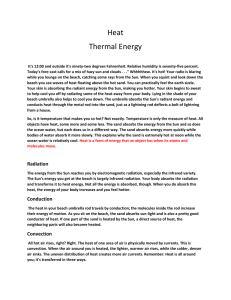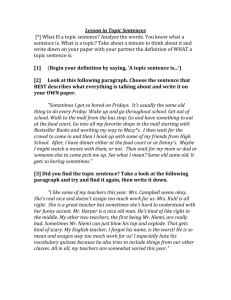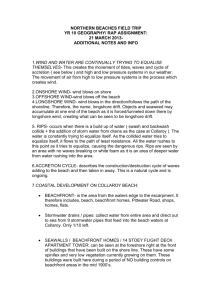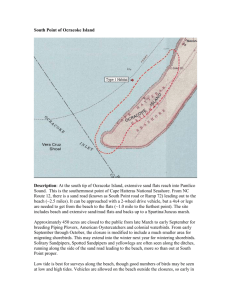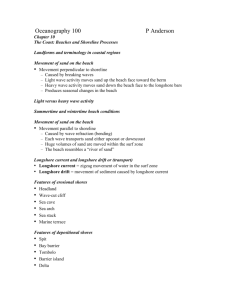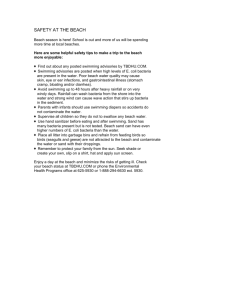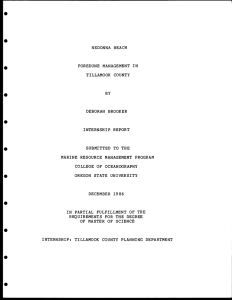Human Activity and their interaction with coastal processes at
advertisement
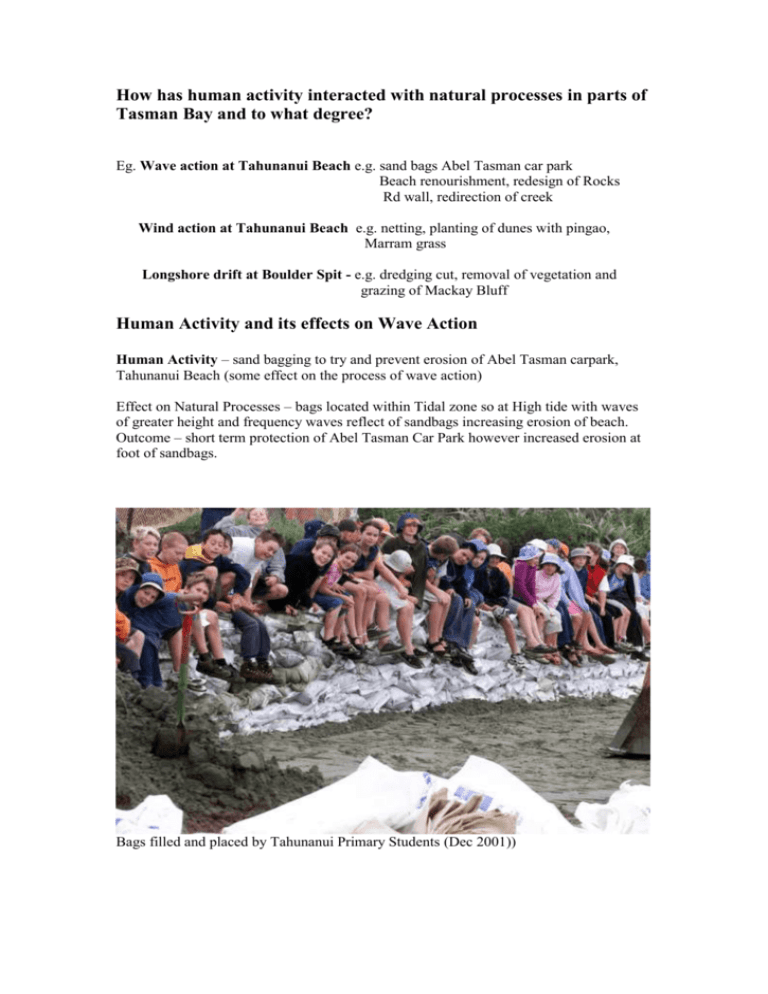
How has human activity interacted with natural processes in parts of Tasman Bay and to what degree? Eg. Wave action at Tahunanui Beach e.g. sand bags Abel Tasman car park Beach renourishment, redesign of Rocks Rd wall, redirection of creek Wind action at Tahunanui Beach e.g. netting, planting of dunes with pingao, Marram grass Longshore drift at Boulder Spit - e.g. dredging cut, removal of vegetation and grazing of Mackay Bluff Human Activity and its effects on Wave Action Human Activity – sand bagging to try and prevent erosion of Abel Tasman carpark, Tahunanui Beach (some effect on the process of wave action) Effect on Natural Processes – bags located within Tidal zone so at High tide with waves of greater height and frequency waves reflect of sandbags increasing erosion of beach. Outcome – short term protection of Abel Tasman Car Park however increased erosion at foot of sandbags. Bags filled and placed by Tahunanui Primary Students (Dec 2001)) Collapse of Sand bag wall due to wave action reflecting off wall and eroding beach at foot of wall. (March 2002) Human Activity - Beach Renourishment to protect Lions Playground and Abel Tasman car park from erosion from Wave Action. (some effect on the process of wave action) Landscaping the new Foredune with a digger (ongoing since 2002 – this photo Dec 2004) Getting sand for the beach renourishment from western end of Tahunanui Beach. Outcome – effect on wave action during periods of frequent and high waves foredune eroded and sand transported off shore. Protection of human assets further landward however beach renourishment has been on going since 2002 as sand has continually eroded offshore during high tides and northerly storms until quite recently. Human Activity – redesign of rocks rd sea wall and redirection of creek. This has affected the process of wave action – erosion and deposition (major effect on processes of wave action) Redirection of creek and new angle to Rocks Rd seawall (July 2005) What it looks like now. (Oct 2007) Outcome – firstly with the redirection of the creek the beach at the eastern end of Tahunanui Beach is drier so swash more easily percolates into the sand and backwash is not so strong and hence erosive. Secondly waves that reflect off Rocks Rd wall do not angle into to the eastern end of the beach as much and with as much power because wave energy is dissipated due to the ribs and new angle of the wall hence reducing the erosive power of the waves. Human activity and its effect on wind action. Human activity - At the eastern end of Tahunanui Beach wind cloth was put up to trap sand being blown up the beach to help establish foredunes to help protect the Abel Tasman car park and Lions playground from wave action. (some effect on the process of wind action) Wind fences put up to trap windblown sand and aid in the formation of a foredune. It was also supposed to keep people off the foredune to help stabilise plant growth – however…..(Jan 2002) Outcome – Some sand transported up the beach by saltation, suspension and crawl trapped in netting aiding in the development of foredune. People still trampled the vegetation on the foredune and contributed to the destabilisation through vegetation damage of the dune with sand blow out. The advent of high tides associated with frequent steep waves meant that sand from foredune still was transported off shore and led to eventual destruction of the netting. Human activity – Planting foredunes with marram and pingao grass to help trap sand that is blown up the beach and aid in the development of foredunes. Additionally roping off foredune and providing well defined access ways to the beach. Planting of grasses and roping off foredune area in front off Lions Playground – Tahunanui Beach (photograph Oct 2007) Outcome – large growth of foredune last 2 years as sand is trapped by grasses. This, as well as a drier beach face due to redirection of the creek, has enabled more sand to be blown up the beach during onshore wind and be trapped by dune stabilisation plants. Human Activity and its effect on Longshore Drift along the Boulder Bank. Human Activity – Opening of the cut in 1906 and continual dredging of it has had a massive effect on the process of Longshore Drift along the Boulder Bank. The Rotoiti cutting the ribbon during the opening of the cut in 1906 Dredging of the cut occurs once a year. The dredge arrives from Westport – this year in October and deepens the channel and dumps the sand out in Tasman Bay. It spends about three to four weeks a year dredging. Outcome – This has had a massive effect on the process of Longshore drift. Sediment that is transported by longshore drift along the Boulder bank (spit) is stopped at the cut entrance. Haulashore Island is now an island and as the old end of the spit now no longer gets any more sediment that originates from Mackay bluff and hence has not grown since 1906. Some people believe if the cut had not been put in that the boulder spit would now be attached somewhere along Rocks Rd although some sort of drainage of the Haven Estuary would still need to occur.

